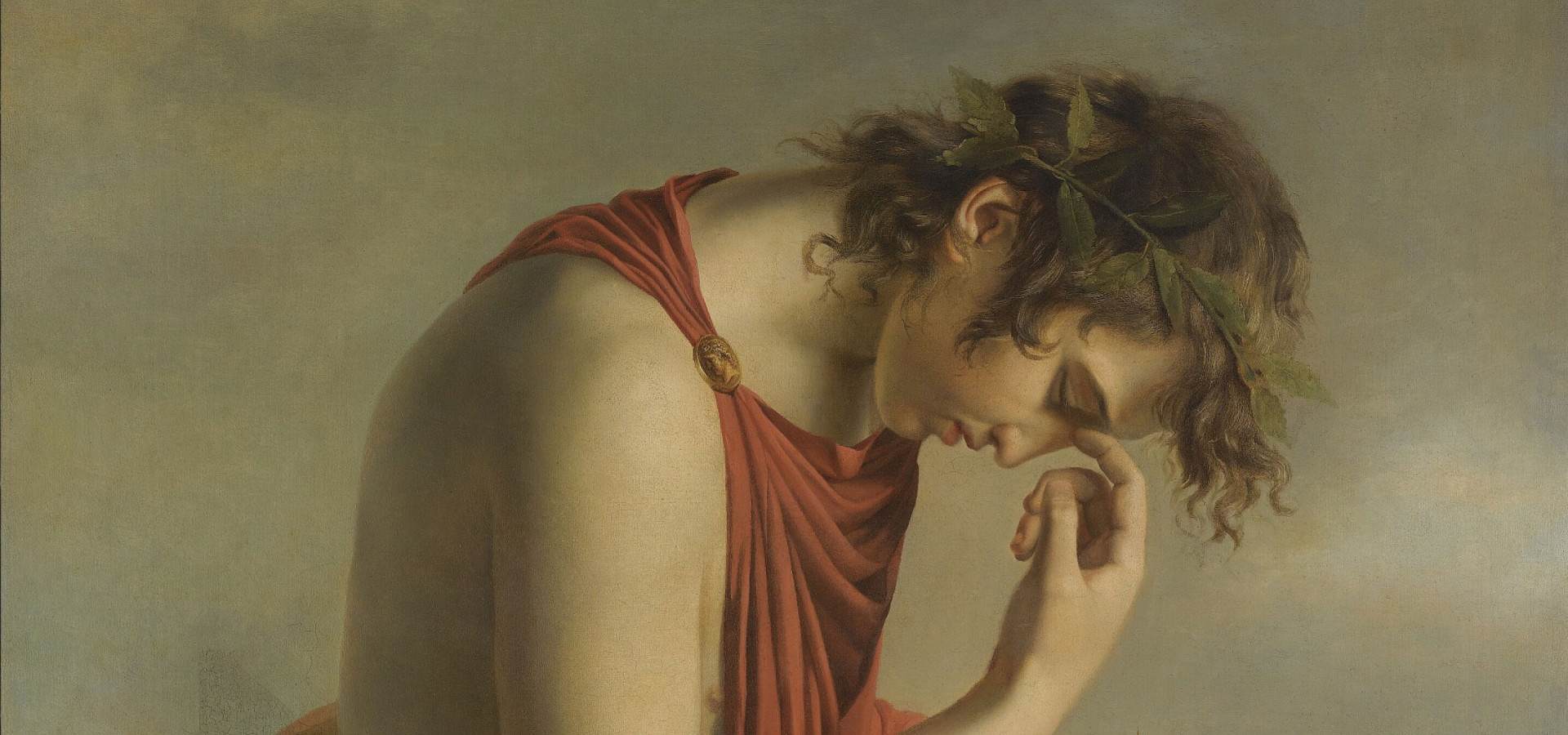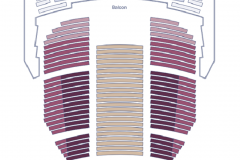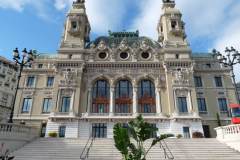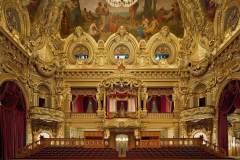Orfeo ed Euridice
Mo | Tu | We | Th | Fr | Sa | Su |
Semi-staged opera
Azione teatrale per musica
Music by Christoph Willibald Gluck (1714-1787)
Libretto by Ranieri de' Calzabigi
Atto d'Orfeo from Le feste d'Apollo (Parma version, 1769)
The Thracian singer Orpheus’s voyage to the Underworld, where his music appeases demons and the God of the Dead, belongs to one of the most popular myths from Grecian Antiquity. Over the centuries, it was celebrated in thousands of books and poems, in paintings, ballets, films, songs and of course operas, with Monteverdi’s L’Orfeo from 1607 considered one of the first examples in this genre. It must be particularly fascinating for any composer to create something for a main character who in the story is actually a singer and when the quality of his music must turn out completely distinct and more beautiful than the rest of the opera.
But the part of this myth that stimulates romantic fantasies in the creative artist’s mind as much as the listener’s is the fact that the motive for undergoing this ordeal was to retrieve a cherished woman. The force of music becomes a symbol for the power of love, which makes humans invincible.
Get to know Gluck’s Orfeo ed Euridice in a semistaged version based on the hugely popular Salzburg production created for our cast! In this form, it has been taken with unheard-of success to more than a dozen European concert halls since November 2024. It is high time, therefore, to share this wonderful experience with you, our home audience.
Synopsis
The first lines of arias, choruses, etc., are given in Italian (1762 version) and French (1774 version).
Act 1
A chorus of nymphs and shepherds join Orfeo around the tomb of his wife Euridice in a solemn chorus of mourning; Orfeo is only able to utter Euridice's name (Chorus and Orfeo: "Ah, se intorno"/"Ah! Dans ce bois"). Orfeo sends the others away and sings of his grief in the aria "Chiamo il mio ben"/"Objet de mon amour", the three verses of which are preceded by expressive recitatives. This technique was extremely radical at the time and indeed proved overly so for those who came after Gluck: Mozart chose to retain the unity of the aria. Amore (Cupid) appears, telling Orfeo that he may go to the Underworld and return with his wife on the condition that he not look at her until they are back on earth (1774 only: aria by Amour, "Si les doux accords"). As encouragement, Amore informs Orfeo that his present suffering shall be short-lived with the aria "Gli sguardi trattieni"/"Soumis au silence". Orfeo resolves to take on the quest. In the 1774 version only he delivers an ariette ("L'espoir renaît dans mon âme") in the older, showier, Italian style, originally composed for an occasional entertainment, Il Parnaso confuso (1765), and subsequently re-used in another one, Le feste d'Apollo (1769).
Act 2
In a rocky landscape, the Furies refuse to admit Orfeo to the Underworld, and sing of Cerberus, its canine guardian ("Chi mai dell’Erebo"/"Quel est l'audacieux"). When Orfeo, accompanied by his lyre (represented in the opera by a harp), begs for pity in the aria "Deh placatevi con me"/"Laissez-vous toucher", he is at first interrupted by cries of "No!"/"Non!" from the Furies, but they are eventually softened by the sweetness of his singing in the arias "Mille pene"/"Ah! La flamme" and "Men tiranne"/"La tendresse", and let him in ("Ah, quale incognito affetto"/"Quels chants doux"). In the 1774 version, the scene ends with the "Dance of the Furies" (No. 28).[8]
The second scene opens in Elysium. The brief ballet of 1762 became the four-movement "Dance of the Blessed Spirits" (with a prominent part for solo flute) in 1774. This is followed (1774 only) by a solo which celebrates happiness in eternal bliss ("Cet asile"), sung by either an unnamed Spirit or Euridice, and repeated by the chorus. Orfeo arrives and marvels at the purity of the air in an arioso ("Che puro ciel"/"Quel nouveau ciel"). But he finds no solace in the beauty of the surroundings, for Euridice is not yet with him. He implores the spirits to bring her to him, which they do (Chorus: "Torna, o bella"/"Près du tendre objet").
Act 3
On the way out of Hades, Euridice is delighted to be returning to earth, but Orfeo, remembering the condition related by Amore in act 1, lets go of her hand and refusing to look at her, does not explain anything to her. She does not understand his action and reproaches him, but he must suffer in silence (Duet: "Vieni, appaga il tuo consorte"/"Viens, suis un époux"). Euridice takes this to be a sign that he no longer loves her, and refuses to continue, concluding that death would be preferable. She sings of her grief at Orfeo's supposed infidelity in the aria "Che fiero momento"/"Fortune ennemie" (in 1774, there is a brief duet before the reprise). Unable to take any more, Orfeo turns and looks at Euridice; again, she dies. Orfeo sings of his grief in the famous aria "Che farò senza Euridice?"/"J’ai perdu mon Eurydice" ("What shall I do without Euridice?"/"I have lost my Euridice") Orfeo decides he will kill himself to join Euridice in Hades, but Amore returns to stop him (1774 only: Trio: "Tendre Amour"). In reward for Orfeo's continued love, Amore returns Euridice to life, and she and Orfeo are reunited. After a four-movement ballet, all sing in praise of Amore ("Trionfi Amore"). In the 1774 version, the chorus ("L’Amour triomphe") precedes the ballet, to which Gluck had added three extra movements.
Program and cast
Conductor | Gianluca Capuano
Choirmaster | Jacopo Facchini
Orfeo | Cecilia Bartoli
Euridice & Amore | Mélissa Petit
Il Canto di Orfeo
Les Musiciens du Prince - Monaco
Opera de Monte Carlo
The Opéra de Monte-Carlo is an opera house which is part of the Monte Carlo Casino located in the Principality of Monaco.
With the lack of cultural diversions available in Monaco in the 1870s, Prince Charles III, along with the Société des bains de mer, decided to include a concert hall as part of the casino. The main public entrance to the hall was from the casino, while Charles III's private entrance was on the western side. It opened in 1879 and became known as the Salle Garnier, after the architect Charles Garnier, who designed it.
During the renovation of the Salle Garnier in 2004–05, the company presented operas at the Salle des Princes in the local Grimaldi Forum, a modern conference and performance facility where Les Ballets de Monte Carlo and the Monte-Carlo Philharmonic Orchestra regularly perform.

 EN
EN DE
DE IT
IT FR
FR ES
ES RU
RU JP
JP RO
RO
 Seating plan
Seating plan 
